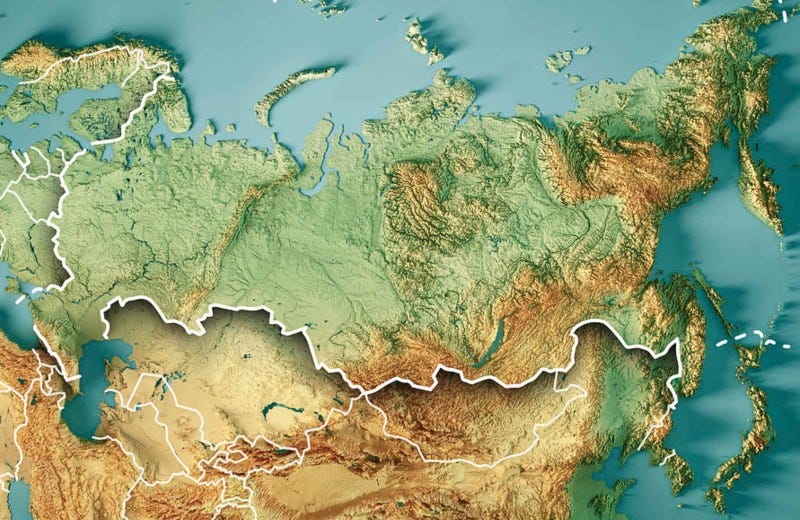How Did Russia Get So Big? (Part 1)
Understanding Russia's present day geopolitical goals by studying it's history
A common question that was asked at the start of the Russian invasion of Ukraine was-why? What did Ukraine do to provoke Russian military aggression.
The answer to this question is deceptively simple - but in order to understand the present, we have to visit the past.
Geographically speaking, Russia is the largest country in the world, spanning over 17 million square kilometers and 11 time zones.
It borders 16 countries, more than any other country in the world. Population wise, it ranks ninth with 144.2 million citizens.
But how, and why, did Russia become so large? The answer to this question provides insight into not only into current geopolitical goals, but also the root cause of it internal challenges.
Obviously, Russia wasn't always this big. In fact, it origins can be traced to the 9th century around Kiev, present day capital city of Ukraine (notice the irony), as the first east Slavic country – Kievan Rus. It was a relatively small kingdom which remained small until the Mongols invaded in the 13th century.
The 13th century saw the entire region conquered by Mongols, at it was only in the 14th century when Russians starting pushing the Mongols back.
Nevertheless, this period of Mongol conquest brought new innovations and technologies from the east, technologies which the Russians adopted.
At the same time, Moscow (first mentioned in 1147) became a prosperous and influential city forming the Grand Duchy of Moscow.
The Muscovites gazed to the east and saw a gaping problem – and this problem would define Russian geopolitical interest for the following millennia.
They saw plains, vast flat plains forming no natural barriers all the way to China. These flat step lands were perfect invasion venues for nomadic mounted nations such as the Mongols. In fact, the steps were perfect for any mounted invader while at the same time being extremely difficult to defend.
This brings us to the first dilemma the Muscovites faced. Where do you place your defenses? Every fortress will be overrun by a determined attacker. It those days of permanent conflict, it was natural barriers and natural hard points that were of paramount importance. Rivers, but more so mountains. The bigger the better!
If one looks at a topographical map of Russia, they would notice it is in fact flat. About 1300 km east of Moscow, you reach the Ural mountains spanning North – South. The Urals however aren’t tall enough to deter a determined attacker (1895 meters).
Therefore, the Russian tzars determined their dilemma can be solved in one of two ways: Either they will conquer, or they will get conquered. They chose the former.
They started looking east, conquering until the reached a natural barrier to provide Russia security. As it happens, that barrier turned out to be the Pacific ocean.
Naturally, all of this territory wasn’t conquered at once. However, by 1700 the Russians had already conquered the majority of the Asian steppes.
A key point in Russian history was the rule of Ivan the Terrible, who in 1547 proclaimed himself to be the first Russian Tzar transforming the Duchy of Moscow into the Russian empire which hasn’t stopped spreading since.
An animation illustrating the territorial expansion of the Russian Empire
After this, Siberia was conquered, mostly by hunters and trappers searching for fur. There was no real push-back as Siberia was inhabited by small tribes unable to field any type of organized defense. While seemingly insignificant, this event marks a pivotal movement in Russian history – the beginning of a multi-ethnic Russian Empire.
Only after Russian felt secure in it’s eastern border did it start looking West…
In the next post, we will continue exploring the Russian Empires expansion to the west as well as the wars with the Ottoman Empire an contextualize it within present day events.

